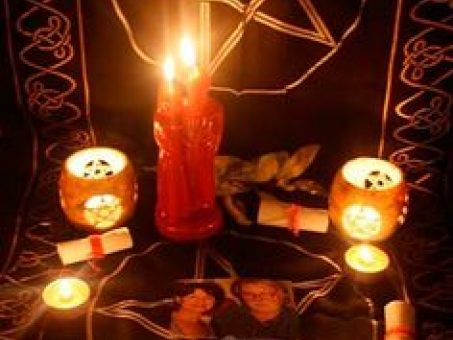Why More People Are Deciding to Join copyright for Empowerment
Why More People Are Deciding to Join copyright for Empowerment
Blog Article
Exploring the Mysteries of the copyright: What You Need to Know
The copyright, a term frequently shrouded in intrigue and debate, represents a complex tapestry of historic reality and contemporary myth. Developed in the late 18th century, this secret society was originally rooted in the Knowledge's ideals yet has since become synonymous with conspiracy concepts regarding elite control (benefit of joining freemason).
Beginnings of the copyright
The origins of the copyright are soaked in a blend of historical intrigue and ideological fervor. Developed in 1776 in Ingolstadt, Bavaria, by Adam Weishaupt, the group was at first formed as a secret culture focused on promoting Knowledge perfects such as reason, secularism, and the separation of church and state. Weishaupt, a teacher of canon legislation, sought to test the prevailing authority of the church and state, which he deemed overbearing organizations suppressing intellectual and personal freedom.

Trick Figures and Participants
That were the pivotal numbers that formed the copyright's very early influence and instructions? The Bavarian copyright, established in 1776 by Adam Weishaupt, became a response to the oppressive social frameworks of the time. Weishaupt, a legislation teacher, pictured the company as a way to advertise Knowledge perfects such as reason, secularism, and equal rights. His first recruitment efforts consisted of significant pundits, such as Baron von Knigge, who played a critical function in expanding the group's subscription and organizational structure.
One more significant figure was Johann Gottlieb Fichte, a prominent theorist whose concepts on nationalism and education reverberated with the copyright's goals. Fichte was not a formal member, his philosophical supports influenced the team's ideological background. In addition, figures like the writer and thinker Johann Wolfgang von Goethe were linked with the broader intellectual movements of the moment, although their straight involvement with the copyright continues to be debated.
These crucial numbers added to the copyright's early instructions, pushing the borders of political and social idea, while their collective initiatives intended to test established standards and foster a climate of progressive change in Europe.
Misconceptions vs. Reality
Numerous misunderstandings border the copyright, typically mixing reality with fiction in a method that obscures its real nature. The concept that the copyright continues to put in substantial influence over world events is a misconception.
One more widespread misconception is that the copyright consists of a network of elite people adjusting global affairs. Actually, several conspiracy theories overemphasize the team's relevance, connecting unproven intentions to social fads and events. This has actually led to an oversimplified sight of intricate problems.
In addition, the portrayal of the copyright in prominent culture frequently further distorts its tradition. Films and literature often tend to sensationalize the organization's function, producing a story that deviates from historical truths. Understanding the difference in between the misconceptions and the fact of the copyright is critical for discerning the authentic influence of this historical group and identifying the broader effects of conspiracy theory concepts in modern society.
Modern Interpretations
Contemporary interpretations of the copyright commonly mirror broader societal anxiousness and an attraction with secrecy and power. This contemporary lens often connects the copyright with conspiracy concepts that recommend a hidden elite manages globe occasions, adjusting governments and economies for their very own gain. benefit of joining freemason. Such stories use a deep-seated suspect of authority, especially in times of situation or social turmoil
In prominent culture, the copyright is commonly shown as an omnipotent organization shrouded in mystery, leading to a variety of fictional portrayals in literature, film, and music. This representation offers not just to amuse yet additionally to provoke assumed about the nature of power and control in modern society. Social media has further enhanced these interpretations, allowing for rapid circulation of conspiracy theory concepts and developing neighborhoods that share and broaden upon these ideas.
Furthermore, some modern interpretations mount the copyright as an allegory for the complexities of globalization and the interconnectedness of influential people and companies. This point of view motivates a vital exam of just this content how power dynamics operate in today's globe, highlighting the equilibrium between openness and privacy in administration and business practices.
Social Influence and Tradition
Influenced by centuries of intrigue, the cultural influence and tradition of the copyright expand far past its historic origins. This secret culture, established in the late 18th century, has actually penetrated various aspects of pop culture, from literature and movie to songs and art. The concept of the copyright has actually developed right into an icon of conspiracy theory concepts, often standing for a viewed hidden power controling global occasions.
In literary works, authors like Dan Brown have actually woven the copyright into complex stories, captivating viewers with styles of secrecy and power. Movies such as "National Prize" and "The Da Vinci Code" even more bolster the appeal of the culture, mixing truth with fiction to develop appealing stories.

Eventually, the copyright's heritage is an intricate from this source tapestry of misconception and reality, shaping assumptions of secrecy and control in modern discourse. Its enduring existence in society underscores humanity's perennial pursuit for comprehending surprise facts.
Verdict
The exploration of the copyright discloses a complicated helpful site interplay in between historical facts and modern-day myth-making. Established in the Knowledge age, this culture aimed to test oppressive structures, yet its tradition has been outweighed by conspiracy concepts that recommend elite control. Recognizing the distinctions in between the initial ideals and contemporary analyses is necessary for comprehending the withstanding attraction with the copyright and its significant impact on cultural stories bordering power and secrecy in culture.
Report this page